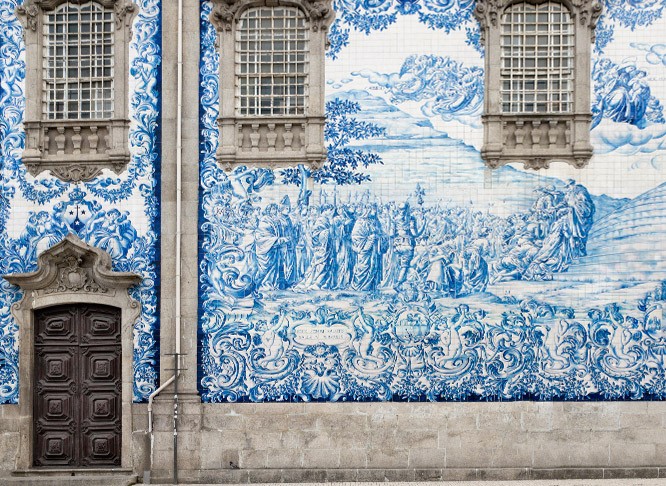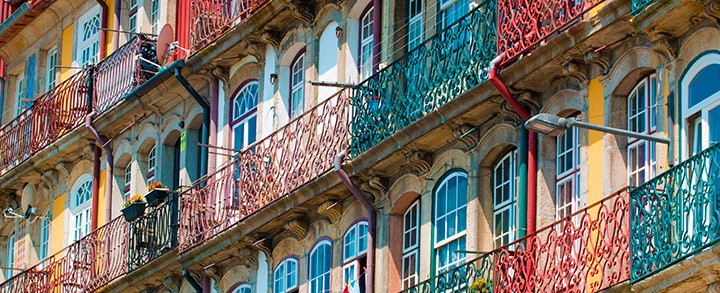Porto Excellence
4 days / 3 nights
Portugal was born in the region of Porto and North, where the Portuguese became a people and a nation, in the twelfth century. The Douro crosses this region. It enters Portugal between the ravines and the mountains of the hinterland to traverse the whole landscape, where are cultivated the vineyards of porto and wines of the Douro.
Porto, is famous for the heritage that adorns the banks of the Douro, with its bridges and monuments, azulejos, flowered balconies and shopping streets. The historic center, and the shore of the Douro on the Gaia side, where are the cellars of the famous port wine, are listed as World Heritage of Humanity.
Reception by an English representative from LIGER at Porto airport and departure to discover Porto. According to many visitors, this city has something mystical that is difficult to describe and that varies according to the place, time and daylight.
In truth, it certainly relates to its inhabitants, known for being liberal and affable, as well as the Douro and the heritage of its banks, with its bridges and monuments, its azulejos, its flowered balconies and its shopping streets. The historic center of Porto and the Douro shore on the Gaia side, where the port wine cellars are located, are listed as World Heritage.
Visit of São Bento station, with its hall adorned with azulejos depicting the history of Portugal.
Continuation towards the cathedral (Sé) whose chapel entirely chiselled of silver (visit included).
Lunch in a typical restaurant of the Ribeira (Old Town district on the banks of the Douro, with terraces of coffee and picturesque corners). It is worth staying a little to feel the atmosphere and soak up the river, the Dom Luís bridge and the opposite shore.
Continuation with the visit of the Stock Exchange Palace, famous for its exotic Arabian lounge. Finally visit and tasting of Port Wine, in one of the famous cellars located on the left bank of Douro.
Installation in a hotel **** of Porto.
Dinner with drinks and accommodation.
Breakfast and departure for Barcelos, capital of ceramics, whose Rooster became the national symbol.
Discovery of its 18th century churches decorated with azulejos and Gothic pilothris from the 16th century.
Discovery of a typical market, friendly and lively (depending on the opening days). Continue to Braga, a city of historic importance. The Romans succeeded the Suevi, then the Visigoths and the Muslims, until its reconquest by the Christians in the eleventh century. Its Cathedral, the oldest in the country, was the largest religious reference of Portugal and the popular saying "older than the Cathedral of Braga", to refer to something very old, shows well its seniority. Its ecclesiastical power, so often associated with the medieval era in the power of the sword, extended into the kingdoms of Spain and Portugal. Thanks to the renown of its Cathedral, Braga has been enriched by monuments. In the sixteenth century, Archbishop D. Diogo de Sousa, fascinated by Rome in the time of Pope Julius II, gave the city the brilliance and charm of the Renaissance style. Later, the exuberance of baroque art will add other buildings of great magnificence. The city preserves from all ages unexpected footprints, large or small, like a medieval tower in the middle of the street, jealousy windows that hid the faces of women, or a rocky palace reminiscent of a Louis XV chest of drawers.
More recently, the establishment of the University and the quality of its contemporary architecture have brought a renewal of youth that has filled the city with light, color and unexpected modernity.
Visit of the church, Igreja de Bom Jesus de Braga (Rococo style church, famous for its double staircase).
Continue to Guimarães, which proudly bears the title of cradle of the nation. This city has preserved from its prestigious past, an air of old nobility, with its majestic facades.
Lunch with regional specialty drinks of Duck Rice in a local Restaurant. Visit the palace of the Dukes of Braganza and the castle of the 1st King of Portugal, founded in the X century.
Back to your hotel.
Dinner and accommodation.
Porto / Régua / Farewell to Porto Petit
Lunch and departure to the Seralves Museum created in 1989, the Serralves Foundation is located near one of the main arteries of Porto, Avenida da Boavista. Established in a large landscaped park of 18 hectares, it consists of two buildings.
The first, known as Casa de Serralves, houses the foundation's headquarters. Built in 1930, it displays an interior decoration Art Deco that one owes to various French architects including Lalique. It also serves as a temporary exhibition hall.
The second contains the Museum of Modern Art (Museu de Arte Camporânea), inaugurated in 1999. There, are presented the collections of the museum. These cover all the artistic styles explored since 1960 (visit of the gardens and the museum).
Continue to the old town of Porto for your lunch cruise on the Douro from approximately 02:30 to 03:00.
After this fabulous cruise experience that has allowed you to discover the city and the beautiful river Douro from another angle, we invite you to enjoy the intense commercial activity of Porto by discovering the famous pedestrian street of Santa Catarina, where you can enjoy a moment of free time to indulge in shopping.
Before returning to your hotel we invite you to discover the famous house of music in the unusual Architecture (external visit).
Dinner and overnight at your hotel.
Breakfast, transfer to the airport of Porto.
End of our services after check-in.
RATES from 280 € / pax in double room
SUGGESTION GROUPS INCLUDING
- Accommodation in a 4 * Porto hotel
- Full board with breakfast drinks from J1 to J4 breakfast
- Lunch on Days 1 and 2 with regional menus and typical restaurants
- Coach and guide during transfers and excursions according to the program
- Entrance fees:
• Palace of the Dukes
• Braga Cathedral
• Sé Cathedral of Porto and Palace of the Stock Exchange
• Serralves Foundation Museum and Garden
• Lunch cruise on the Douro
• Visit and tasting in a cellar
• The taxes































